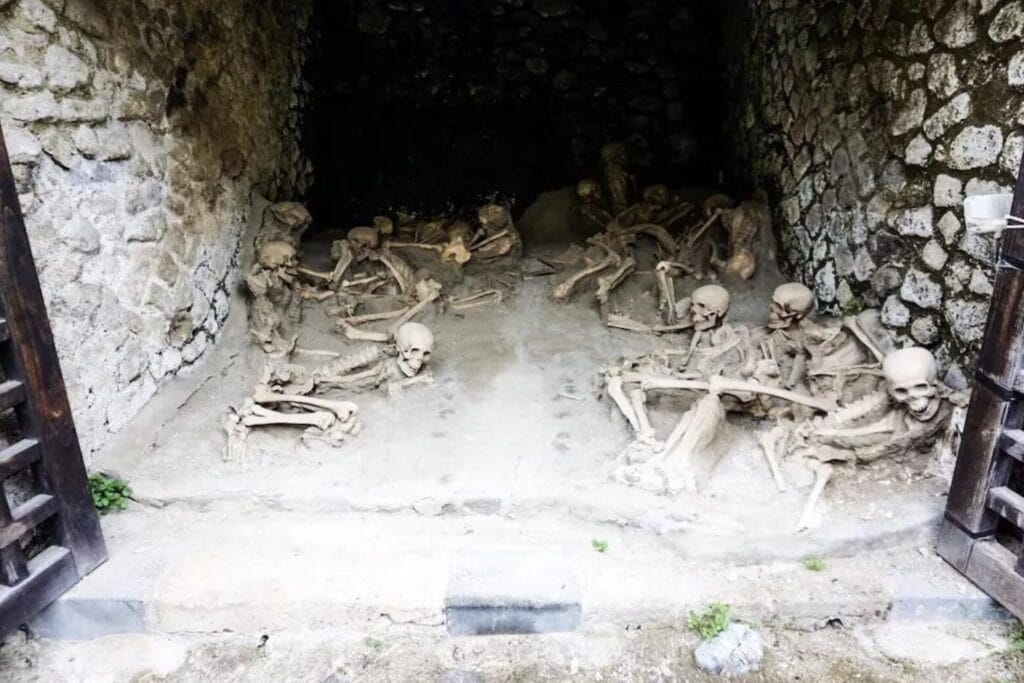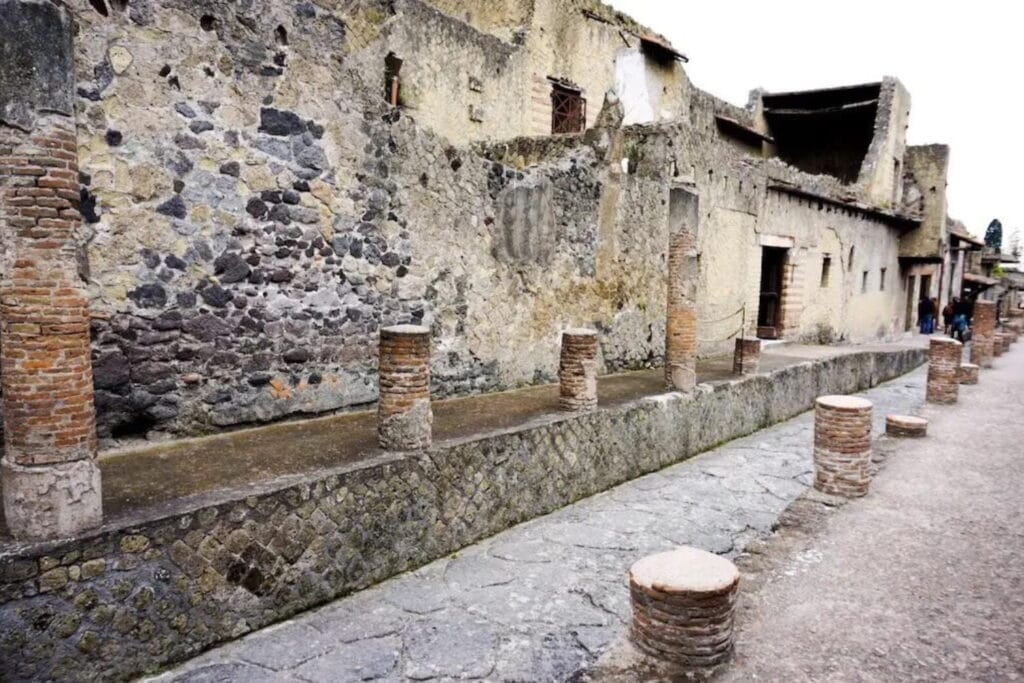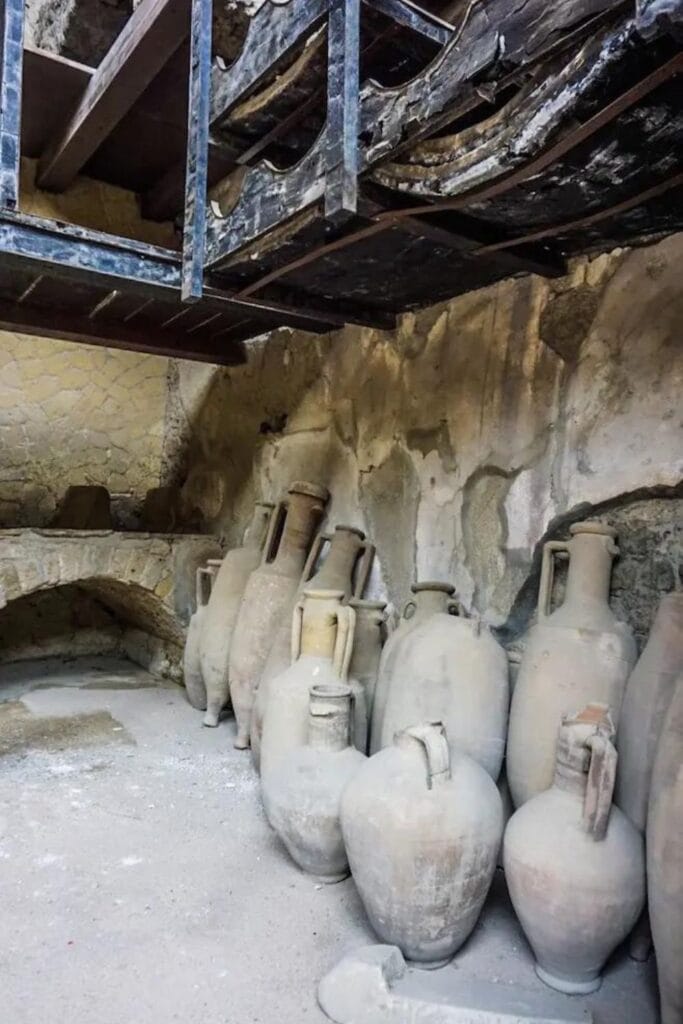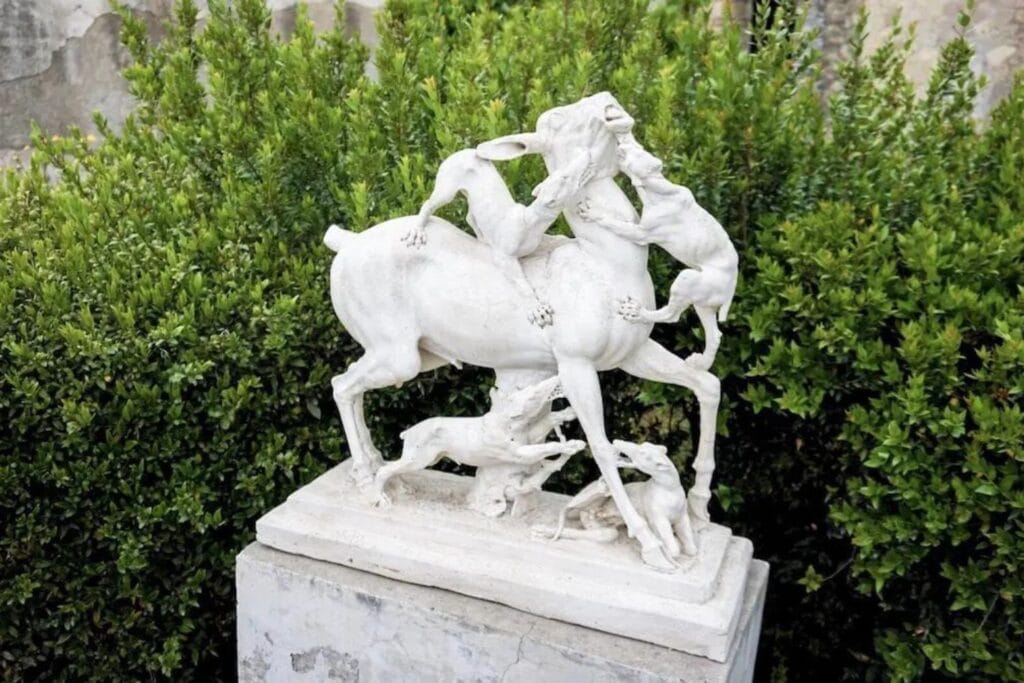A Guide To Visiting Herculaneum!
Regarding history, few places are as unique and notable as Herculaneum. Often overshadowed by Pompeii to its south, Herculaneum offers a far better insight into Roman life in 79 AD. To help you prepare for a trip to this historic site, we’ve compiled a comprehensive guide detailing everything you need to know about visiting Herculaneum!
This post may contain affiliate links. That means if you click on a link and purchase something I recommend, I will receive a small commission at no extra cost. As an Amazon Associate, I earn from qualifying purchases. This helps keep my website up and running and is very appreciated. Thank you for your support! You can read my full disclosure policy here.
About Herculaneum:
Herculaneum was an ancient city of 4,000–5,000 inhabitants in Campania, Italy. It lay 5 miles southeast of Naples, at the western base of Mount Vesuvius, and was destroyed with Pompeii, Torre Annunziata, and Stabiae by the Mount Vesuvius eruption of 79 AD. The town of Ercolano now lies over part of the site.
The excavations of Herculaneum and Pompeii began in 1738 and continue today, concentrating on the ancient shoreline. The ruins of Pompeii, Herculaneum, and Torre Annunziata have been a UNESCO World Heritage site since 1997.
Located in the shadow of Mount Vesuvius, Herculaneum was an ancient Roman town destroyed by volcanic pyroclastic flows in 79 AD. Unlike the more famous Pompeii site, mostly covered in ash and pumice pebbles to around 10 metres, the pyroclastic rock that buried Herculaneum solidified up to 25 metres high in some places.
This led to a unique preservation phenomenon providing not only solid structures of buildings but also various organic artefacts such as plants, fabrics and even food (carbonised loaves of bread left within ovens).
Visiting Herculaneum is an excellent alternative to the more popular and crowded Pompeii. It will give a more realistic and detailed view of what it must have been like for the inhabitants during this time.

Exploring Herculaneum:
Most people will arrive via the entrance bridge, giving fantastic views across the site. Once inside, you can hire a private tour guide and audio headsets or use the free walking tour. Whichever option you choose, you will start by walking down through the tunnel towards the old port warehouses that once opened up onto the beach.
I chose the free walking tour, which included a booklet detailing all the various ruins. However, if you choose this option, check the map carefully, as it’s easy to miss out on a few segments, and you’ll end up backtracking a few times like me!
The Barrel Arches:
These vaulted rooms were used as port warehouses and boat storage and supported the imposing structures of the terraces above! It’s here that around 300 skeletons were found along with valuables such as necklaces and coins. It is thought the people killed here had run to escape via the shoreline but were beaten back and died from the high temperatures of the blazing clouds erupting from Vesuvius.
I thought it was pretty sad seeing these remains all bunched up together; I couldn’t help but imagine how terrifying it must have been for these people trying to escape the inferno of the volcano and knowing they wouldn’t be able to escape!

Terrace Of M. Nonius Balbus:
Walking back up towards the ramp brings you to a large open square surrounded by Suburban Baths. Within this piazza stands the funeral altar of the local senate M.Nonius Balbus, who rebuilt the city after the disastrous earthquake of 62 AD. Unfortunately, you can’t enter the baths, but you can look through the windows and see what they would have been like.

Once out into the city streets, you can glimpse what living in this ancient city would have been like. The streets form a grid-like structure with cobbled streets lined with houses, shops and other buildings.

Here are some of my favourite buildings within the city:
House Of Relief Of Telephus:
This house was believed to belong to M.Nonius Balbus and is the second largest in Herculaneum. Built in a scenic position on a slope leading down to the marina, the house was built on three levels and housed a rich collection of sculptures. The atrium had Greek-like columns supporting the upper levels of the house.
Looking at these colourful columns, it’s easy to imagine how extravagant this building was. Looking closer around the remains, you will also find the faint remains of paintings along its walls.

Large Taberna:
This was the local pub; marble-covered counters housed large jars used to store food and drink.

Hall Of The Augustals:
This building was the forum where all political, religious and commercial life occurred. It had a quadrangular layout with walls separated by arches and four central columns. Along its walls, you will find many relatively intact paintings. Here, you could watch firsthand some of the restoration work. It was fascinating to watch how painstakingly slow the process was and the attention to detail that was involved by the restoration team.


House Of Neptune And Amphitrite:
This was one of my favourite parts of Herculaneum, as the paintings and mosaics were so well preserved! The name of this dwelling is derived from the glass paste wall mosaic depicting Neptune and Amphitrite, which adorned the east side of the room.


The Food Shop
The food shop was found to be in an excellent state of preservation. As you can see from the picture below, it was furnished with wood shelving, which still shows the scars of the once-burning building.

House Of The Mosaic Atrium
This was an aristocratic residence built in a scenic position within the town. It housed painted decorations and a grand mosaic atrium with a black and white checkerboard design. You can’t go inside the house as the structure is still unsafe, but you can still imagine how this building would have once been a beautiful place to live at that time.

House Of The Bronze Atrium
In one of the smaller homes, you will find this bronze herm, thought to be the homeowner. I found this face intriguing as I wondered about the fate of this individual. Did they escape, or did they succumb to the inferno that erupted over the town?

The House Of Argus
The name of this house comes from a painting that is no longer present, depicting Argus guarding Lo, a nymph beloved by Zeus. The house itself was large and had large columns surrounding its gardens. It was here that excavators found an actual pantry, with flour and loaves ready to bake and terracotta pots containing legumes, olives, almonds and fruit.

Here are some more pictures taken around the Herculaneum site:










Herculaneum Museum
As you exit the archaeological site, a small museum houses many of the artefacts found within the site, such as jewellery. Although small, the museum allows visitors to learn more about the people of Herculaneum and how they lived their lives.




The Boat House
Just before the exit, a small building houses a well-preserved Roman boat. This 9-metre boat was found near the Barrel Arches. Inside were the remains of two bodies, and several swords, scalpels and coins were also located close to them.


How To Get To Herculaneum:
Visiting From Naples:
Herculaneum is approximately 15 Km away from Central Naples. The easiest and cheapest way to get to Herculaneum is by train. Take the local Circumvesuviana train to Portici-Eroclano, which takes around 20 minutes from the Napoli Piazza Garibaldi station.
You can buy tickets from the station or use the Trainline. The cost when I visited in May was about €2.20 each way. Once off the train, it’s just a short walk downhill to the site.
For convenience, if you are worried about getting lost, I recommend using Maps.me. It’s a free mobile app that you can use to find your way around anywhere; download any required maps whilst you have WiFi.
Visiting From Sorrento:
To visit Herculaneum from Sorrento, you can take the train from Sorrento to Portici-Eroclano. The train from Sorrento to Herculaneum will take anywhere from 45 minutes to an hour, costing around €4 each way.
Visiting From Rome:
It is possible to visit Herculaneum from Rome in a day. I recommend going as early as possible as it’s a lot of travel. To get to Herculaneum from Rome, you can take the train from Rome Termini to Naples Centrale and then transfer onto the Napoli Circumvesuviana train to Portici-Eroclano. The train from Sorrento to Herculaneum will take anywhere from 2 to 3 hours and costs around €50 in return.
Driving To Herculaneum:
If you have access to a car, it is feasible to use it to take you to the site. Depending on traffic, you’re looking at a twenty to thirty-minute drive from Naples. You’re looking for anywhere from two to three hours from Rome to the archaeological site. Parking is available at Herculaneum.
Tours To Herculaneum:
If independent travel isn’t your thing, many tours in and around Naples will take you to Herculaneum. For the best value tours, I recommend using Viator.
When To Vsit Herculaneum:
Herculaneum can be visited all year round; however, it can get busy in the summer months. If you don’t like crowds, I recommend visiting Herculaneum during the shoulder season. I visited in May, and there were hardly any people around at all. It felt like the perfect time to wander around this archaeological wonder!
Looking for somewhere to stay in Naples? If so, I recommend using Booking.com.
Visitor Information:
Opening times:
- Summer (01/04/ to 31/10) – 09.30 – 19.30 with the last admission at 18.00
- Winter (01/11 to 31/03) – 09.30 – 17.00 with the last admission at 15.30
- Closed on 1st January and 25th December.
- Admission price: Adults €13, free for children under 18.
For tickets, you can buy on the day or you can buy online, however, there is a €2 reservation fee. Online bookings can be made here.
Bring your passport or ID with you If you’re an EU citizen, as you may qualify for a ticket discount at Herculaneum. If you’re 18-24 and an EU citizen or if you’re over 65 and are an EU citizen, you’ll receive a discounted, or even free, admission to the site.
Tips For Visiting Herculaneum:
If you don’t want to get lost following the free guide like I did, then make sure you also pick up a free map!
If you want to know a bit more about the history of Herculaneum, then you can rent an audio guide for 5€. You can also sometimes rent a private guide to show you around and explain the ruins and history of the Roman town; the cost is negotiable with the individual guides themselves.
If you’re staying a few days in Naples and want to see Pompeii as well, you can buy a ticket that covers both sites and also includes entrance to Oplontis and Boscoreale for 22€. Visiting the sites in Stabiae is free. These tickets can be purchased at both Herculaneum and Pompeii.
If you’re vulnerable to mosquito bites, then make sure you bring some bug spray! There are a few areas within the site that have stagnant water, which is a breeding ground for those pesky bugs!
If you want to take lots of fabulous photos, bring a wide-angle lens as many buildings are very close together, making it difficult to get some good shots.
Wear comfortable shoes as the ground can be very uneven and mostly cobbled.
If visiting Herculaneum in the summer months, make sure you bring plenty of water and a sunhat.
When on the trains, be wary of pickpockets! Naples, like other big cities in Europe, is full of them.
Final Thoughts:
From the ancient frescoes of the Casa del Fauno to the picturesque views of Mount Vesuvius, visiting Herculaneum will undoubtedly create an unforgettable experience full of history and culture. From being preserved in time better than its counterpart Pompeii, Herculaneum is a must for any avid traveller or history buff.
As you explore this remarkable city, take your time walking and cherishing every sight, sound and smell trapped in eternal beauty since 79 AD and be ingrained with the legacy left of ancient times past. So plan your next vacation spot at Herculaneum and experience why it’s one of the most beloved cities in Italy!
Read more: How to spend 24 hours in Venice, Italy!
Thanks so much for stopping by; I appreciate everyone who takes the time to read and make it to the end! I have lots of exciting new content in the next few weeks, so make sure you pop back to catch up!
Remember to follow my social media accounts for more travel inspiration and updates!
Happy travels!



